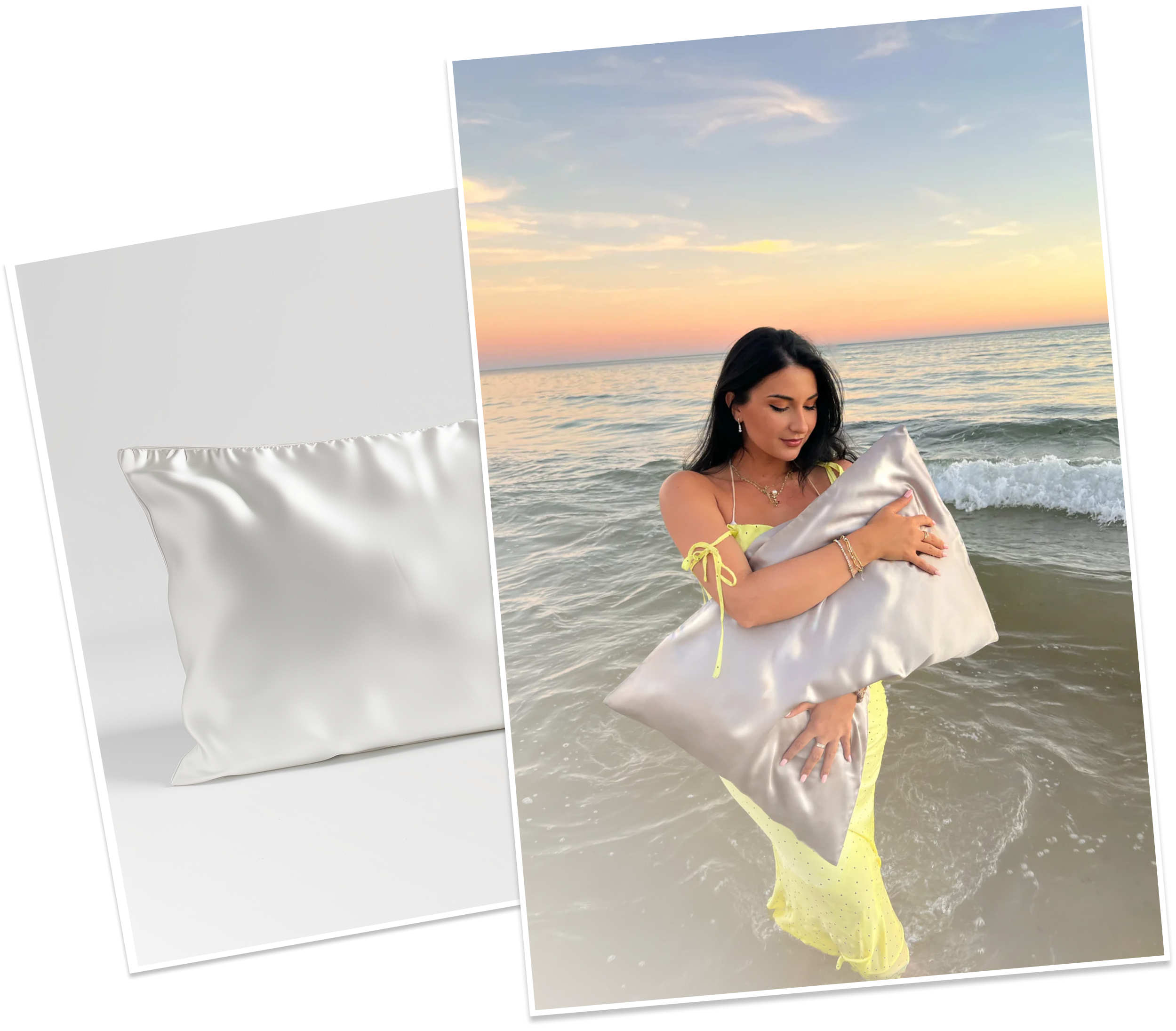
Silk Vs. Satin: Key Differences and How to Choose the Right Fabric
Share
We invite you to join us as we explore the key differences between silk and satin. Learn how to choose the right fabric for your needs today!
In this guide, we compare the look, feel, and care of these two functional yet luxurious materials. Our goal is to help you understand the difference between silk & satin so that you can make an informed choice when purchasing garments, pillowcases, or dresses.
What’s The Difference Between Silk And Satin?

Understanding the Basics
Silk and satin are both known for their smooth texture and elegant appearance. However, they are not the same.
In this article, we clarify that while silk is a natural fiber produced by silkworms, satin refers to a weave that can be made from silk, polyester, or other fibers. The difference between silk and satin lies in their composition and how they are woven.
Key Differences in Material
One major point to note is the origin of the fabric. Silk is a natural material, prized for its softness and strength, while satin can be produced from synthetic fibers as well as silk. This creates differences in price, care, and durability.
- Silk is more breathable and hypoallergenic. It’s ideal for delicate clothing and luxury bedding. Oftentimes, fabrics that imitate silk (but will never be like real silk!) use the term ‘silky’ to describe how they feel to look and touch.
- Satin, on the other hand, often has a glossy surface and a smooth feel but may be less durable if made from synthetic fibers.
When considering your options, it’s important to think about your specific needs. Ask yourself, "what's the difference between silk and satin?" to determine which fabric offers the best balance of comfort and practicality.
A Closer Look at Weave and Texture
The weave plays a significant role in determining the fabric's properties. For instance, satin weave creates a smooth, lustrous surface that can mimic the look of silk. This is why many people search for the difference between satin and silk when shopping for items like pillowcases or dresses.
Although both materials are soft, silk typically has a more natural sheen, whereas satin might display a more dramatic shine due to its weaving technique.
Moreover, the tactile experience differs. Silk tends to have a delicate drape and a cooler touch on the skin, making it a preferred choice for luxurious garments. Satin, depending on its fiber content, can feel equally smooth but may vary in weight and durability. Understanding these nuances is essential in appreciating the differences.
Practical Considerations and Care
Care instructions are another important factor. Silk, being a natural fiber, requires gentle washing and careful handling. Satin, particularly when made from synthetic materials, might be easier to care for.
Knowing the key differences between silk and satin can help you decide which fabric aligns with your lifestyle. If you prefer low-maintenance fabrics, satin may be more suitable, whereas those seeking natural fibers with added benefits might lean towards silk.
When shopping for bedding or clothing, you might encounter terms like "silk satin" or "satin pillowcases" alongside silk products. The difference between silk & satin becomes clear when you look at factors such as durability, breathability, and care routines.
Choosing the Right Fabric for Your Needs
Our guide encourages you to consider the following when choosing between silk and satin:
- Usage: Think about whether you need a fabric for clothing, bedding, or accessories. Silk is ideal for items that require breathability and softness, while satin works well for glamorous evening wear and decorative pieces. On any given day, silk is unquestionably the more luxurious one of the two fabrics, given its relation to royalty in history.
- Budget: Silk is generally more expensive due to its natural origins. If cost is a major factor, satin might be the better choice.
- Maintenance: Evaluate how much care you are willing to invest. Silk requires more delicate handling compared to many satin fabrics.
- Feel and Look: Ultimately, personal preference plays a key role. Hold both fabrics and notice their texture and sheen. The differences between silk and satin is not just technical; it’s also about the sensory experience.
The Impact of Fiber Content on Performance
While exploring these fabrics, it is helpful to note that the performance of satin can vary widely depending on its fiber content. Satin made from silk carries the benefits of natural fibers, such as moisture-wicking and temperature regulation. In contrast, polyester satin might offer a higher gloss but can lack the breathability of silk. Understanding the differences between silk and satin in this context will guide you toward the right fabric for your specific applications.
Summary and Final Thoughts
In summary, the difference between satin & silk is marked by the natural origin of silk versus the varied composition of satin. The questions "difference between satin and silk" and "difference between silk and satin" are frequently asked because each fabric offers unique advantages and disadvantages. Meanwhile, many wonder what the difference is, and our guide aims to answer that with clear points on texture, care, and usage.
We hope this comprehensive comparison helps you decide which fabric is best for you. Whether you choose the timeless elegance of silk or the versatile charm of satin, understanding their differences will ensure that your selection meets both your aesthetic and practical needs.
Thank you for reading our guide on fabric choices. We are dedicated to providing clear insights so you can enjoy the luxury of well-chosen materials in your wardrobe and home.
Honeylux Co is a sustainable, woman-owned brand that offers high-quality pure organic silk accessories, including silk scrunchies, silk sleepmasks, silk hair wraps, silk robes, silk pillowcases, and much more. Invest in the best silk accessories and feel luxurious every single day.
If you found this blog informative, please share it with someone who needs it and spread the word on social media!
Related Product Recommendations:

